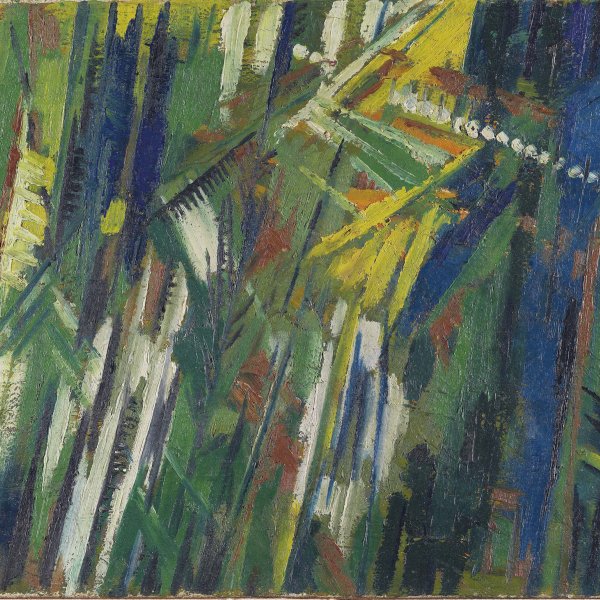Blue Nude
ca. 1908
Oil on canvas.
73 x 116 cm
Museo Nacional Thyssen-Bornemisza, Madrid
Inv. no.
638
(1979.6
)
ROOM 36
Level 1
Permanent Collection
The painter Mikhail Larionov met his artistic companion and wife Natalia Goncharova in his early youth, and the couple remained united by an enriching relationship of mutual inspiration. Both successfully combined international influence with their own artistic theories. During the first years of the twentieth century Larionov studied in Moscow under the artist Konstantin Korovin, whose painting had become imbued with the Impressionist aesthetic that was very much in tune with the tastes of Moscow’s Francophone bourgeoisie. Larionov travelled to Paris in 1906 to assist Diaghilev with the Russian section of the Salon d’Automne, and became a keen follower of Post-Impressionism, and soon afterwards succumbed to the influence of Symbolism and Primitivism. Furthermore, during those years Larionov frequently visited the home of Sergei Shchukin, where the masterpieces of Gauguin, Picasso and Matisse in his collection also helped steer his art in a new direction. The present Blue Nude was Larionov’s reaction to the Polynesian paintings of Gauguin in the Shchukin collection.
Despite this foreign influence, the artist never lost sight of Russian cultural traditions. He and Goncharova began to collect icons, stone sculptures and lubki (crudely executed low-cost hand-painted folk woodblock prints), which would become basic references in their pictorial language. By about 1908, the year the present Blue Nude was executed in theory, Larionov had fully embraced Primitivism. In addition, the special luminosity of the painting may be related, as suggested by Jean-Claude Marcadé in an article on Larionov, to the influence of the southern light of Ukraine.
Paloma Alarcó
Despite this foreign influence, the artist never lost sight of Russian cultural traditions. He and Goncharova began to collect icons, stone sculptures and lubki (crudely executed low-cost hand-painted folk woodblock prints), which would become basic references in their pictorial language. By about 1908, the year the present Blue Nude was executed in theory, Larionov had fully embraced Primitivism. In addition, the special luminosity of the painting may be related, as suggested by Jean-Claude Marcadé in an article on Larionov, to the influence of the southern light of Ukraine.
Paloma Alarcó










